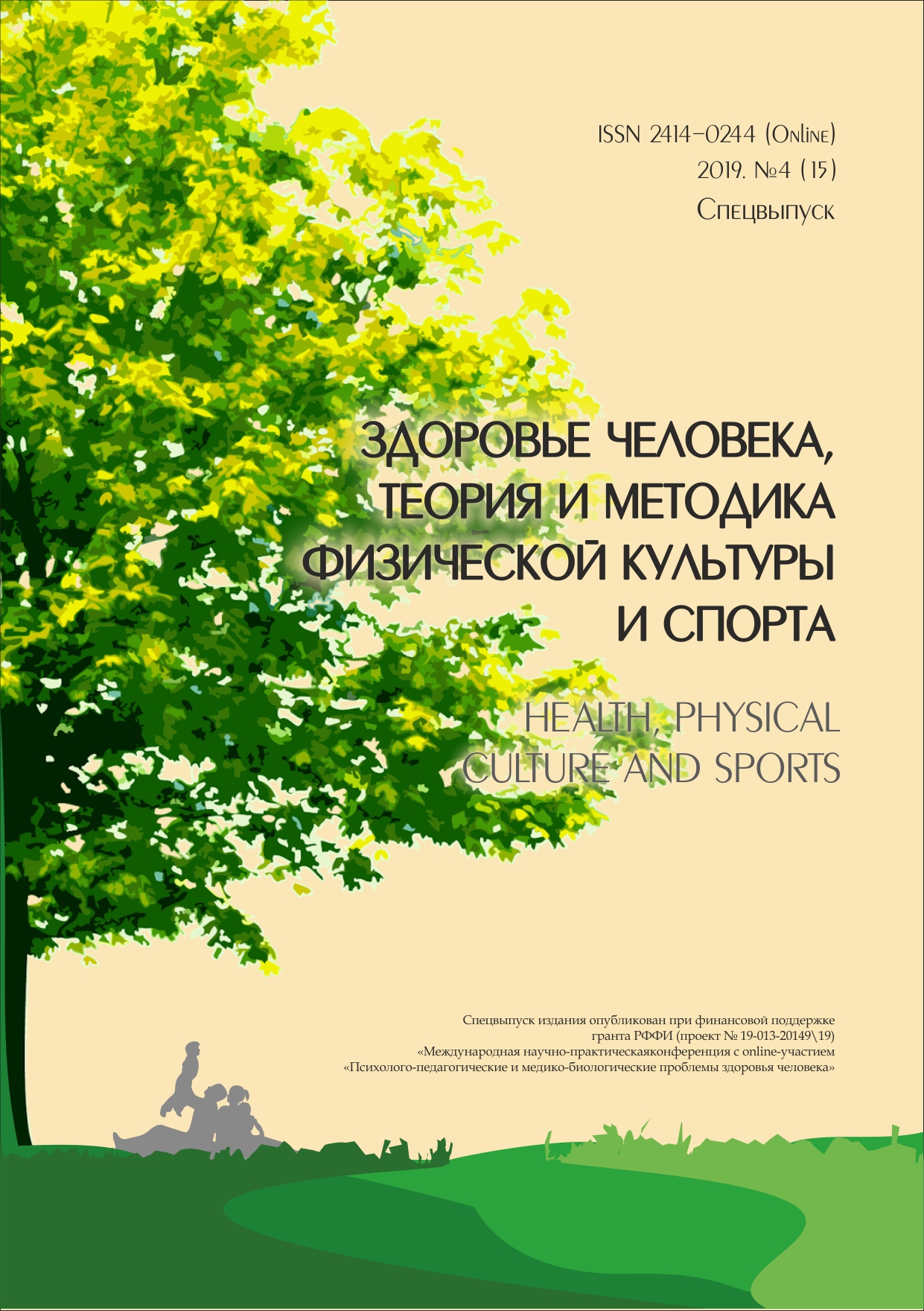COMPARATIVE CHARACTERISTICS OF THE LEVEL OF ELECTROMAGNETIC RADIATION IN VARIOUS RESIDENTIAL AREAS OF THE REGIONAL CENTER OF BELARUS
Abstract
The aim of this work was to carry out a comparative characteristic of the level ofelectromagnetic radiation in various residential areas of the regional center of Belarus (Grodno). Forthis the following objectives: to measure the average level of electromagnetic radiation created byhousehold appliances; to assess the level of electromagnetic fields in various rooms of the flat housingof the Oktyabrsky and Leninsky districts of the city of Grodno, to conduct a comparative analysisof electromagnetic radiation in different parts of the city of Grodno. Surveyed: 35 apartments, 240rooms in the Leninsky district and 15 apartments, 105 rooms in the Oktyabrsky district in whichlives-174 people.The study was carried out at door-to-door rounds on weekends from 19.00 to 20.00. in the winterseason of 2018 at the maximum stay of all residents in the apartment. Taken into account the numberof devices in each room and dimensions (apartment) housing and the number of residents living in it. To measure the electromagnetic field used device: meter parameters of electromagnetic andmagnetic fields In-meter-at-002. Measurement of the electric field produced at frequencies: in therange 1‑at a frequency of 100 Hz At e Ust = 25 W / m in the measurement mode “Continuously” andin the range 2 at a frequency of 20 kHz at E Ust = 2.5 W/m in the measurement mode “Continuously”.Statistical data processing was carried out using Microsoft Excel and Statistica 10. Calculatedaverage electromagnetic loads in each room are: the magnetic field in different areas of apartments(entrance hall, living room, sleep area, work area, food area, bathroom, balcony) measured averagevalues of electromagnetic radiation in the area of use from your TV, refrigerator, microwave oven,personal computer, electrical meter, the most loaded sockets. And also analyzed the levels ofelectromagnetic radiation depending on the number of storeys of the building, the presence ofelevators and power lines and trolleybus lines.Excess of PDU of electromagnetic radiation at a frequency of 100 Hz in the following types ofpremises of apartments of housing stock of Oktyabrsky and Leninsky districts of the city of Grodnois noted: kitchen, a drawing room, an office — in a zone of work.In the apartments of the Oktyabrsky district of Grodno, the average level of electromagneticradiation exceeded the PDU in the food zone-2.5 times, in the sleeping area-0.5 times, in the halls-2.9times, in the working area of the offices-2.7 times.The maximum values indicating the excess of the remote control of electromagnetic radiationare fixed at the level of the included sockets, reaching 188 W / m (at a remote control of 25 W / m),at the level of working computers, refrigerators, televisions, exceeding the remote control by 3 ormore times.
Downloads
References
Шарохина А. В. Электромагнитное поле в быту // Материалы докладов первой Всерос. молодежной науч. конф. «Тинчуринские чтения»; под общ. ред. д-ра физ. — мат. наук, проф. Ю. Я. Петрушенко. В 2 т. Т. 2. Казань: Казан. гос. энерг. ун-т, 2006. С. 161–163.
Паньков И. В. Электромагнитное загрязнение окружающей среды // Современные проблемы технических наук: сб. тез. докл. Новосиб. межвуз. науч. студ. конф. «Интеллектуальный потенциал Сибири», Новосибирск, 19–20 мая 2004 г. Ч. 2. Новосибирск: ИГАСУ, 2004. С. 73.
Влияние бытовых приборов на здоровье человека / М. Ю. Копылова, М. В. Липикина, Т. В. Никулина и др. // Окружающая природная среда и экологическое образование и воспитание: 6 Всерос. науч. — практ. конф., 17–18 февр. 2005 г.: сб. ст. Пенза: Приволж. Дом знаний, 2006.С. 130–133.
Васильева Л. К., Горский А. Н. Электротехнические аспекты влияния низкочастотных электромагнитных полей на человека // Вестник МАНЭБ. 2000. № 4 (28). С. 31–35.
Ромашев Д. К. Электромагнитное поле и его влияние на здоровье человека: реферат. СПб.:СПГТУ, 2001. 21 с.
Павлова Ю. А. Воздействие акустических и электромагнитных полей на жителей мегаполиса // Материалы 2 Моск. науч. форума: в 2 кн. Кн. 2. Московская наука проблемы и перспективы:6 науч. — практ. конф. М.: Моск. комитет по науке и технологиям, 2005. С. 605–609.
Федчишин А. Влияние электромагнитного излучения на человека. М., 2010. С. 10–20.
Одинаев Ф. И., Одинаев Ш. Ф., Шафиев Ш. И., Шутова С. В. Электромагнитные излучения и здоровье человека // Вестник ТГУ. 2015. т. 20, вып. 6. С. 14.
Рахимбеков М. С. Влияние электромагнитных излучений на здоровье человека // Гигиена труда и медицинская экология. 2017. № 3 (56). С. 19.
Синотова О. Ф., Новоселова Е. Г., Огай В. В. и др. Влияние электромагнитных волн сантиметрового диапазона на продукцию фактора некроза опухолей и интерлейкина-3 иммунизированных мышей // Биофизика. 2002. Т. 47, № 1. С. 78–82.
Хорсева Н. И. Экологическое значение естественных электромагнитных полей в период внутриутробного развития человека: автореф. дис. … канд. биол. наук / Ин-т биохим. физики РАН. М., 2004. 20 с.
Барышев М. Г., Касьянов Г. И., Джимак С. С. Влияние низкочастотного электромагнитного поля на биологические системы // Известия вузов: пищевая технология. № 3. 2007. С. 44.
Боталов Н. С., Некрасова Ю. Э., Софонова Е. С., Рязанова Е. А. Гигиеническая оценка влияния электромагнитного излучения на здоровье человека // Международный студенческий научный вестник. 2017. № 6. С. 12.
Гичев Ю. П., Гичев Ю. Ю. Влияние электромагнитных полей на здоровье человека. Новосибирск: Ин-т регион. патологии и патоморфологии СО РАМН, 1999. С. 6–12.
An author should not normally publish manuscripts describing essentially the same research in multiple journals or publication venues. Such redundant publication is generally considered to constitute unethical publishing behavior, and if discovered may result in a manuscript under consideration being rejected, or a published article being retracted.
Authors of manuscripts reporting on original research should present an accurate account of the work performed, accompanied by an objective discussion of its significance. Underlying data should be represented accurately in the manuscript. The manuscript should contain sufficient detail and references to permit others to replicate the work. The fabrication of results and the making of fraudulent or knowingly inaccurate statements constitute unethical behavior and may be cause for rejection or retraction of a manuscript or published article.





